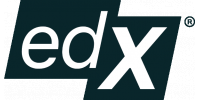- Self-paced
- Free Access
- Fee-based Certificate
Sign Language Structure, Learning, and Change
You can't access an archived course
- 4 Sequences
- Advanced Level
Course details
Syllabus
- Fundamental issues for language status
- Emergence and evolution of sign language
- History of American Sign Language
- Variation and change within ASL
- Lexical representation and annotation
- Cognitive processing
- From transparent to opaque morphology
- Literary innovation constrained by grammar
- Framework for Sign Language Structure, Learning and Change
Module 2
- Sign features and syntactic packaging
- Co-articulation and timing of suprasegmentals
- Interaction of syntax and prosody
- The spatial architecture for linguistic scaffolding
- Reference frame and spatial verb typology
- Core lexemes and frozen derivatives
- Layering of lexical representation and articulatory operations
- Linear template and syntactic agreement slots
- Optimizing loan words for syntactic agreement
- Split between inflectional space and lexicon
Module 3
- Biological and environmental factors for language acquisition and evolution
- Challenge of designing a visual language based on English morphology
- Potential impact of visual analogy on grammar
- Morphological typology and complexity
- The neurobiology of sign language processing
- Reframing ASL as a classifier predicate language
- Acquisition of ASL morphology
- Best-fit architecture and cognitive scaffolding
- Factors affecting homogenous use of sign language
- Natural experiment for language evolution
Module 4
- Sign language archaeology
- Emergence of grammar
- Gestural discourse dynamics and collective memory
- Historical sociolinguistics
- History of polyglottism and diglossia in Deaf community
- Reconstructing early ASL grammar
- From syntax to bound morphology
- Development of bound morphology
- The current state of sign language structure, learning and change
Prerequisite
Instructors
Ted Supalla
Professor of Neurology, Linguistics, and Psychology
Georgetown University
Editor

Platform
Harvard University, the Massachusetts Institute of Technology, and the University of California, Berkeley, are just some of the schools that you have at your fingertips with EdX. Through massive open online courses (MOOCs) from the world's best universities, you can develop your knowledge in literature, math, history, food and nutrition, and more. These online classes are taught by highly-regarded experts in the field. If you take a class on computer science through Harvard, you may be taught by David J. Malan, a senior lecturer on computer science at Harvard University for the School of Engineering and Applied Sciences. But there's not just one professor - you have access to the entire teaching staff, allowing you to receive feedback on assignments straight from the experts. Pursue a Verified Certificate to document your achievements and use your coursework for job and school applications, promotions, and more. EdX also works with top universities to conduct research, allowing them to learn more about learning. Using their findings, edX is able to provide students with the best and most effective courses, constantly enhancing the student experience.

